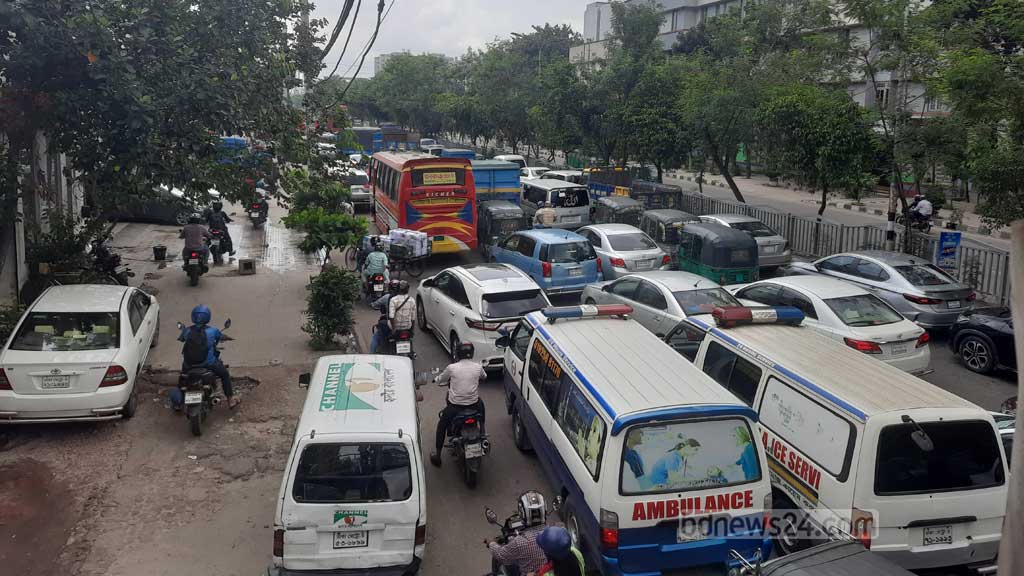Home
+
The city is resuming normal activity after deadly clashes and devastation, followed by restrictions and general holidays

Published : 24 Jul 2024, 04:23 PM
Daily activities have resumed in Dhaka after a week of unprecedented and deadly violence during student protests for reforms to government job quotas, followed by a curfew and general holidays.
People went back to work on Wednesday after the government decided to keep offices open for four hours from 11am on the last two working days of the week, with the curfew relaxed from 10am to 5pm.
Besides banks, offices, courts and the stock market, the readymade garment factories also reopened, while broadband internet services were restored on a limited scale.
Crowds of people were spotted in Mirpur, Agargaon, Mohakhali, Kakrail, Malibagh, Rampura, Paltan, Topkhana Road and other areas.
Buses started plying the streets, along with rickshaws, motorcycles, autorickshaws and cars. Several places even experienced traffic jams.
“The closures left me bored. I’ve left home to withdraw some money from the bank as I don’t have cash,” said Sunil Roy in Kakrail.

In Malibagh, rickshaw driver Momin Mia said he did not get enough passengers during the curfew. On Tuesday, he earned Tk 295 and had to pay the owner Tk 120.
“How can I provide for a family of four like this? When will this misery end? I came to Dhaka to earn a living because there was no work in the village. But I haven’t escaped my bad luck,” said Momin.
It took more time for the traffic congestion to ease in Kakrail, Paltan and Malibagh as there were fewer traffic police in the streets.
In Mirpur 10, troops stood guard until 9:30am as people started to gather and wait for transports to get to work.
Asifur Rahman, a private sector employee, complained about a lack of public transport, with the metro rail closed indefinitely after extensive vandalism at the Mirpur-10 and Kazipara stations.
“I’ve left home as the office has reopened. But there are fewer vehicles on the street,” he said while waiting for a bus to Karwan Bazar.
Saiful Islam used the metro rail to commute to Motijheel from Kazipara. “I’m in trouble as the metro rail is closed and there are fewer buses.”

Battery-powered rickshaws, normally banned from the main roads, were taking passengers on the thoroughfares amid broader restrictions on public movement.
Mohiuddin, a driver of an electric rickshaw, was shouting for passengers at the Mirpur 10 roundabout. “I’m asking for Tk 50 per passenger to Karwan Bazar via Farmgate,” he said.
Intense traffic jams spread in and around Agargaon, Bijoy Sarani and the nearby Mirpur Road areas since the law-enforcing agencies restricted traffic on the streets or screened vehicles strictly.

Munibur Rahman, additional commissioner of traffic at Dhaka Metropolitan Police, said the restrictions aimed to ensure security for the Ganabhaban, parliament and the Prime Minister’s Office.
The presence of officials at the heart of the administration and the Secretariat was normal, but visitors were not allowed.
“It is comforting as the office has reopened after so many days of uncertainty. Life is slowly returning to normal,” said an office assistant at the home ministry.